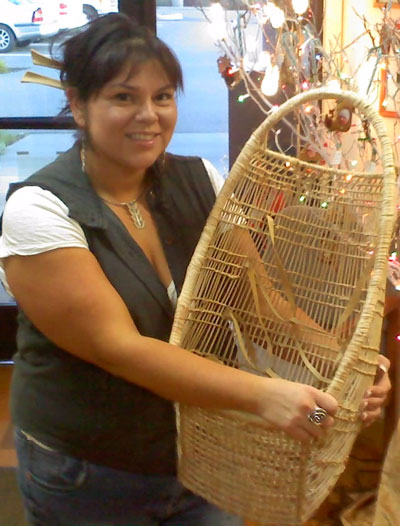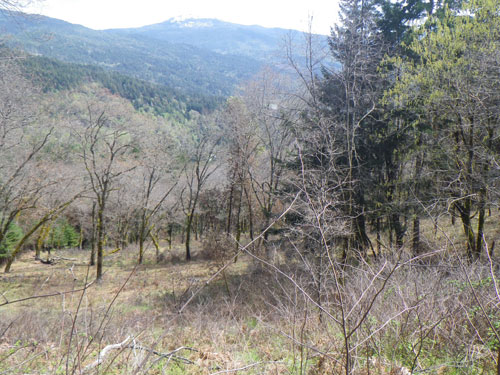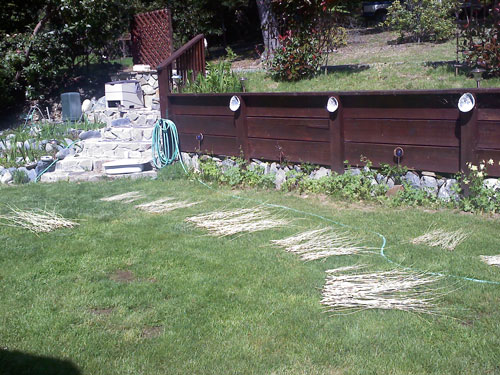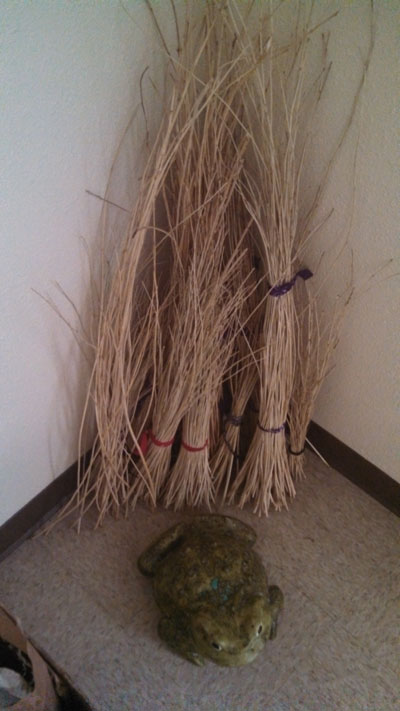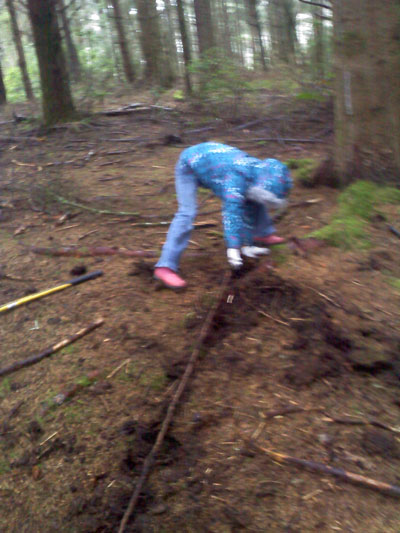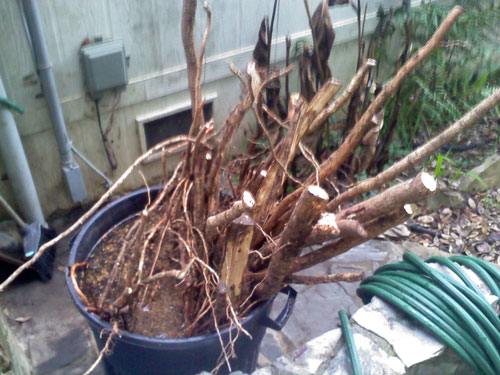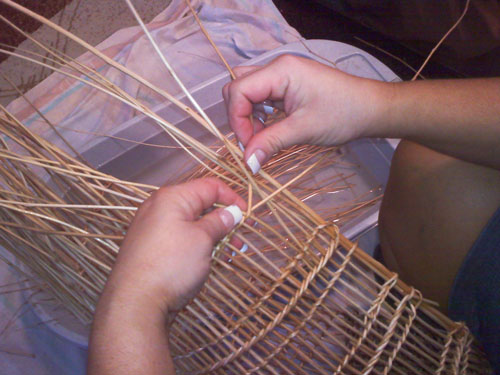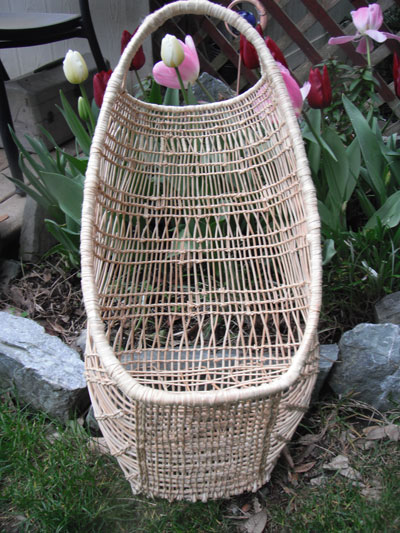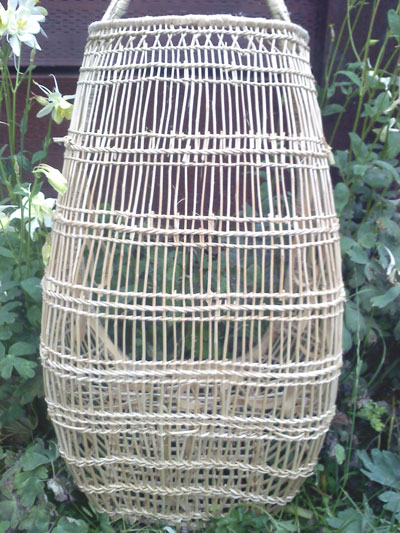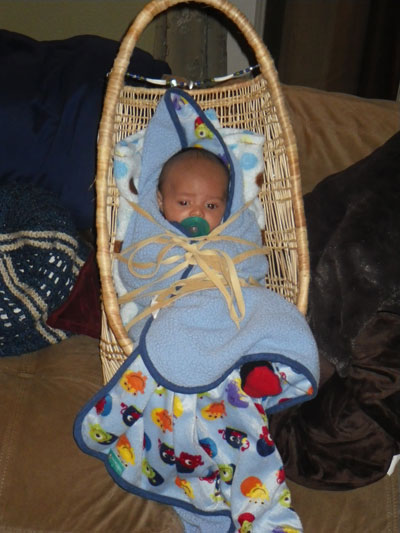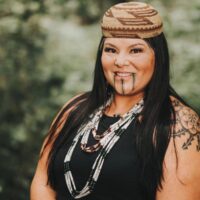
Maggie Peters
Traditional Hupa, Yurok, and Karuk Baby Basket Weaving
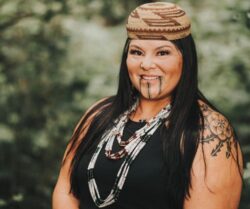
From time immemorial, infants of the Yurok, Karuk, and Hupa tribes of modern-day Humboldt County have begun life in a traditional baby basket woven of hazel sticks and spruce roots. Baby baskets provide a safe place where infants can be swaddled and tied in with leather straps, proving security and comfort reminiscent of their mother’s womb. The construction of a baby basket requires specifically sized hazel sticks, gathered only in the spring, and spruce roots broken down into ribbon-like strips, gathered typically in the wetter seasons when the ground is softer. A single basket requires 250-350 sticks, depending on size, and 25-35 feet of 1/4-inch and 1/2-inch spruce roots. Material preparation is just as challenging as weaving and requires a lot of practice and dedication in order to get the amount of materials necessary to weave a single basket.
Maggie Peters (Yurok, Karuk) grew up in a large extended family, and was taken as a young child by her aunts and grandmother on trips to gather raw materials for baskets. Becoming a dedicated weaver at the age of twenty, Maggie learned to weave from Wilverna Reece of Happy Camp, California. After moving to Willow Creek, California, at the age of twenty-seven, Maggie connected with her aunt Susan Burdick and began teaching weaving classes in her home. Susan taught her the art of interpreting a basket’s construction to understand techniques used in its making. Maggie made her first baby basket in 2006, and has completed 126 since.
Apprenticeship Program
2023
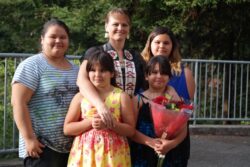
Maggie and Misty Knight (Hupa, Yurok) will weave a baby basket in the Yurok, Hupa, and Karuk traditions, from start to finish (including gathering, cleaning, sorting, and weaving materials). They will document the entire process with photos, videos, and journal entries.
2018
In 2018, master basket weaver Maggie Peters returned to ACTA’s Apprenticeship Program to help Nelia Marshall (Hupa) deepen her knowledge of the Yurok, Karuk, and Hupa cultural practice of making traditional baby baskets.
2014
Maggie guided her cousin and apprentice, Kristen Rose Raymond, in the entire process of constructing a baby basket, from gathering and preparing raw materials to weaving techniques.

